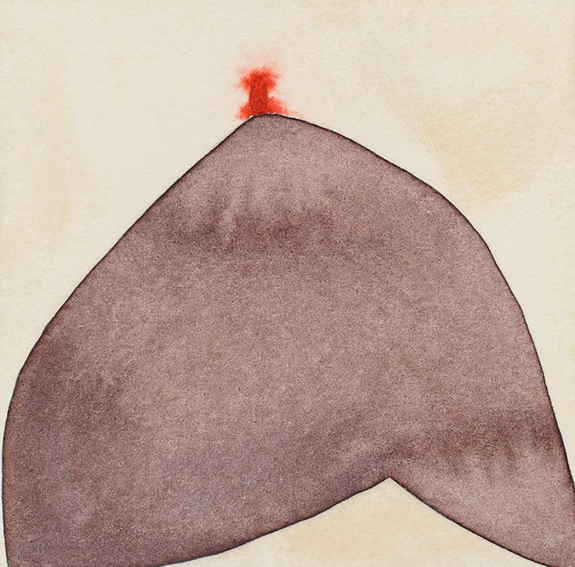
by Barbara Morris
With Washington awash in new and ever more frightening swamp monsters, how might a painter who doesn’t normally create political art express her sentiments about the current crisis? Rachel Davis created The First 100 Days, essentially a visual diary comprised of 100 small-scale abstract watercolor paintings, marking the dates between Inauguration Day and April 30.
Born in Cambridge, England, the Portland-based artist previously made representational work focused on natural and architectural objects. Here she employs a recurring vocabulary of simple geometric shapes — ovals, circles, squares and rectangles — along with some domes, a few lumpy cloud shapes and the occasional pussy hat. While working on the series, Davis was reading Harvard professor Michael Puett's The Path, a distillation of Chinese philosophy that 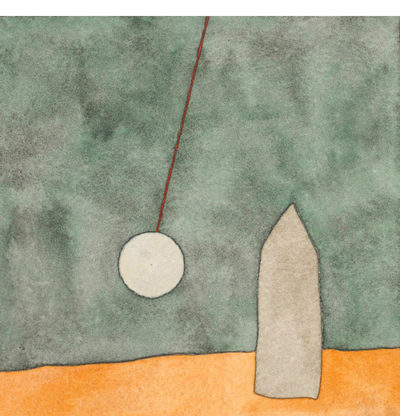
Jan 20, 2017, the first in the series, features a large red-orange dot in field of pale green, accompanied by a red smear in lower right edge. The understated image, with its allusions to heat, danger and blood, reads as a distress signal. Feb 8, 2017 offers vestiges of cityscape indicated by a gray obelisk. To the left of it, a circle suspended from a red cord appears ready to strike. It is, quite obviously, a wrecking ball about to smash into the Washington Monument, a clear symbol of the administration’s disregard for democratic principles. Taken at face value, the paintings feel orderly, purposeful, meditative and generally soothing — although at times quirky forms do set off unsettling rhythms, spiky lines and occasional hints of menace. In these works, as with those of Tucker Nichols, individual paintings of great simplicity combine forces to create a whole greater than the sum of the parts. While one might enjoy them solely for their aesthetic value, the complex and intense emotions undergirding them imbue the series with an additional layer of power and passion.
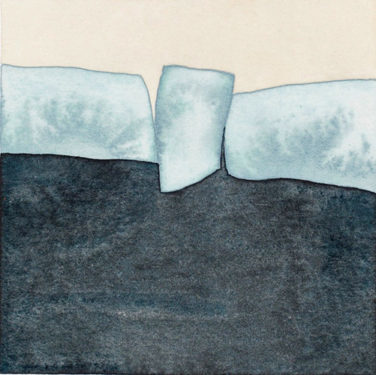
# # #
Sharing the bill with Davis in these two side-by-side solo shows is sculptor Nancy Mintz. Where Davis is precise and intimate, inviting us close, Mintz's installations activate large spaces. The center of the gallery is dominated by an anthropomorphic grouping of truncated cones, Processionals 1-6. With a scale above human height, the tallest at 96 inches, these elongated forms congregate together, creating conversations and relationships amongst themselves. They bring to mind the work of Ann Weber whose Personages series of larger-than-life 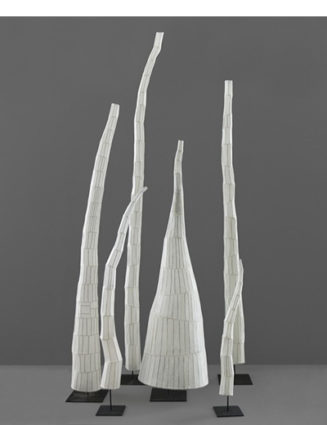
Ganoderma, a striking wall-mounted piece, spirals out from a central core with overlapping “petals” of wire and paper, curving in an irregular fashion. A central oval, falling just at eye level, draws our gaze inward toward complex and intriguing shadow patterns, a compositional byproduct, but an important one for Mintz. Hydra (Infinite Path) exhibits a coiled intensity. Wall-mounted above eye-level with parallel lines of paper-encased wire loop wrapped into a loose ball, the object evokes both a mobius strip and the mythological serpent of the title: a mix of organic and synthetic elements.
Many of Mintz's forms evolve from truncated cones. Presented singly or in pairs they form pod-like objects, which are sometimes conjoined to form larger, more complex forms. Some, such as Radiolaria and Rotifer, suggest satellites, space probes or perhaps Leonardo da Vinci's designs for flight or war machines. The titles, which refer to microscopic creatures, 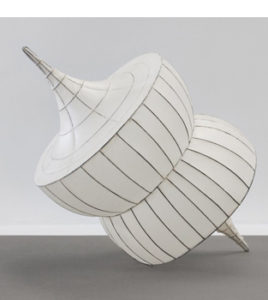
Though these playful fusions of geometry and biology are rooted in science, they’re frequently disrupted by an improvisational thrust. That restless energy, suffused with an internal logic, speaks eloquently for the ways rational thought can be harnessed to the creative impulse.
# # #
Rachel Davis: “The First 100 Days” and Nancy Mintz: “Field Notes” @ Traywick Contemporary through October 28, 2017.
About the author:
Barbara Morris is a Bay Area-based writer and artist. She has been a regular contributor to Artillery and art ltd. magazines for the past seven years, and previously wrote for Artweek magazine for ten years, seven of them as a contributing editor. Her writing has appeared in WEAD magazine, stretcher.org, and Artist's Dialogue, as well as numerous other publications. Morris holds an MFA from UC Berkeley.